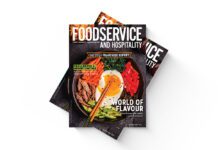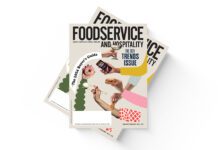Take a look at the state of the foodservice industry these days, and it’s clear that an evolution is taking place. QSR restaurants are becoming more than just places for burgers and fries (although these two staples remain popular); fast-casual eateries are growing in popularity, working diligently to become havens of food made from scratch, served in a fast and casual environment (see p. 11), and fine-dining restaurants are reinventing themselves to become more relaxed while serving food that is globally inspired and approachable.
But the changes don’t stop there. In the back of the house, chefs are working closer than ever with their suppliers, choosing products that are sourced locally, ethically and responsibly. Farmers are becoming new-age rock stars, working closer than ever with operators to provide them with products that are geared specifically to their needs (see p. 29). As the incidences of food intolerances grow on a daily basis, more consumers are looking for alternatives — be they gluten-free, hormone-free or organic menu items. One only has to look at the burgeoning health-food sections in most grocery stores to see the evolving changes first-hand.
More and more, the onus of responsibility is shifting to the operator who must now work harder to meet the changing needs of today’s demanding clientele. While walking the floor of the recent CRFA Show in Toronto, it was clear gluten-free offerings are today’s hottest new products. In fact, according to Packaged Facts, a U.S. consumer market research company, sales of gluten-free products totalled $4.2 million in 2012 — almost triple what they were in 2008. And, interestingly this year, Pfizer Canada made its debut at the CRFA Show, promoting the use of Epi-pens in restaurants — certainly not your typical exhibitor but an important development nonetheless. It doesn’t take much to realize that the idea makes sense. After all, if one of your customers were to have an anaphylactic reaction in your restaurant, and required immediate help, would you know what to do?
Of course, let’s not forget the impact of greening on today’s foodservice operation (see p. 21). In a matter of a decade, greening has become a way of life for most consumers, and as they transfer their expectations to the restaurants they patronize — be they QSR, fast-casual or full-service, operators are being spurred to make further changes — from the type of equipment being purchased, to the type of dinnerware being used, to food products being highlighted on the menu (see p. 12).
Change is happening fast and furious, and one thing is certain: more change is coming. With the province of Ontario promising to pass legislation that will force restaurant operators to list calorie counts for all food and beverages, including alcohol, operators are going to be required to become more transparent in how they run all facets of their business. When, not if, that reality hits, it will invariably change the way operators run their business in ways that cannot be imagined today. If you think it’s challenging running a restaurant today, you haven’t seen anything yet.




![Redberry Restaurants Becomes Canada’s Area Director for Jersey Mike’s Subs Expansion Redberry Jersey Mike’s Subs - Paul Pascal (left), director of Operations, and Stephen Scarrow (right), senior Marketing manager]](https://www.foodserviceandhospitality.com/wp-content/uploads/2024/04/Redberry-Appointments-218x150.jpg)















